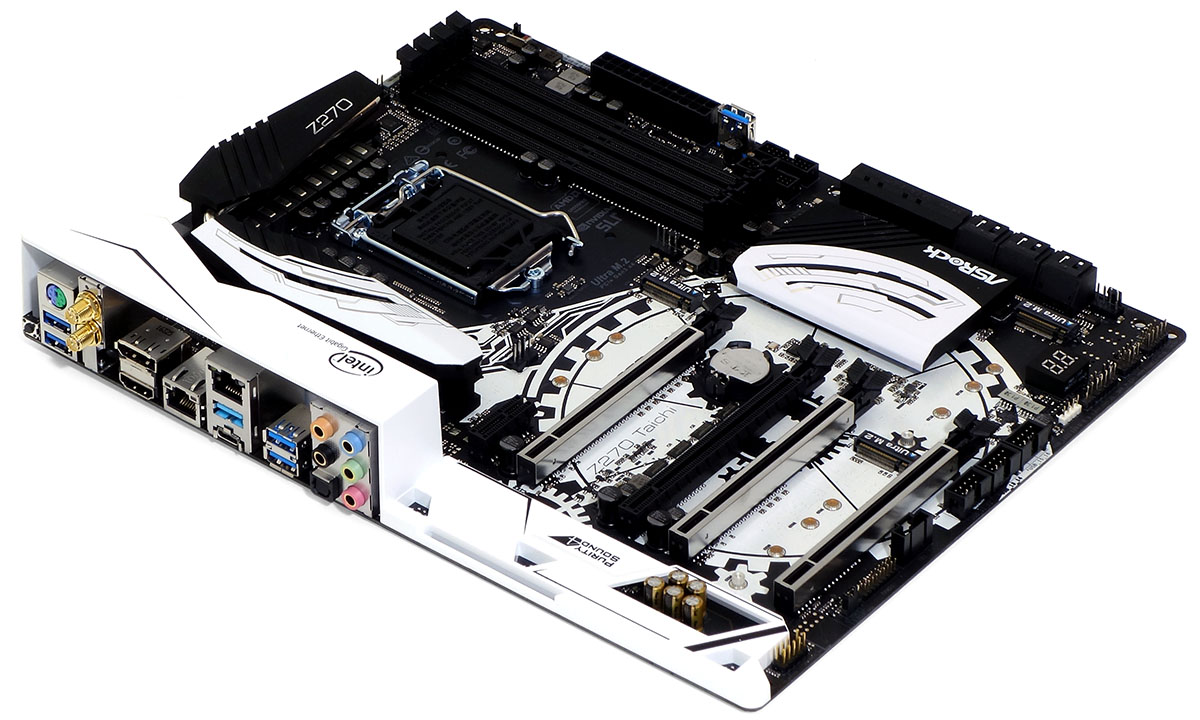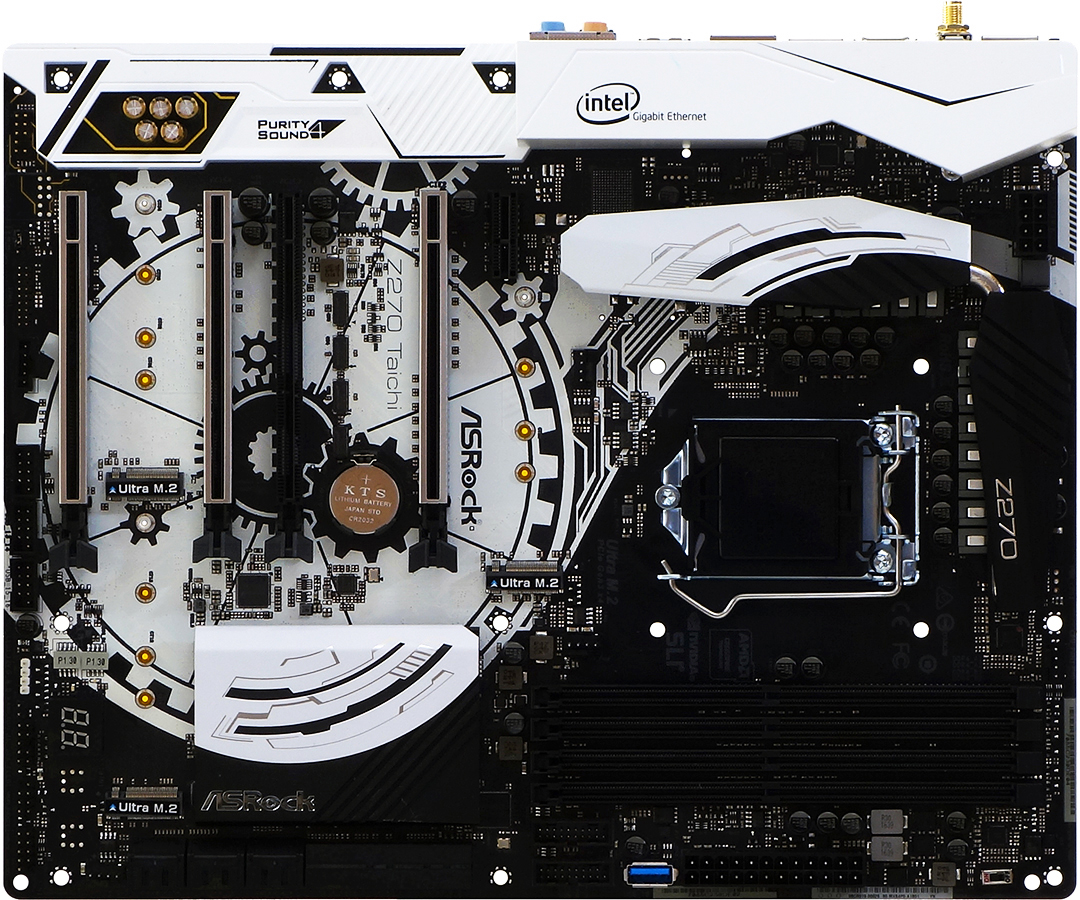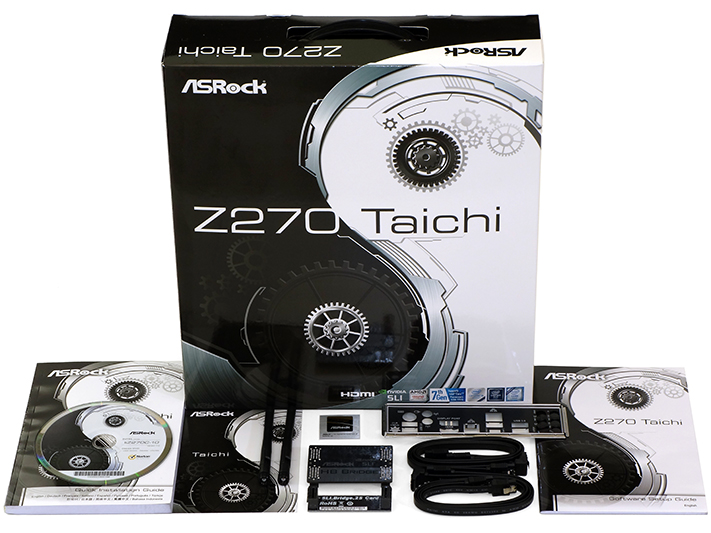Early Verdict
The Z270 Taichi matches two already-awarded motherboards in value at its list price. Users interested in its unusual configuration capabilities will likely jump at one of its frequent discounts.
Pros
- +
Good Overclocking
- +
Dual Gigabit, plus Wi-Fi networking
- +
Improved slot configuration flexibility
- +
Triple NVMe M.2 interfaces
Cons
- -
List price places it in a value tie rather than a win
- -
Won’t O/C our CPU to the expected 48x 100 MHz (but can do 47x 102)
- -
Dual front-panel USB 3.0 headers share the bandwidth of one port
- -
No I/O panel USB 2.0 (which are still useful for keyboards and mice)
Why you can trust Tom's Hardware
Features & Specifications
We've tested a flurry of Z270 boards in the past few months, from the value-priced MSI Z270 SLI Plus to ultra-premium Gigabyte Aorus Z270X-Gaming 9, yet we understand that the heart of the market is in $160 to $220 boards. Anything cheaper typically cuts features that enthusiasts expect, and anything pricier has them considering LGA-2011v3 options. ASRock hits the core of the market with a $220 Z270 Taichi, which is often promotionally priced at $190 and even offers additional mail-in rebates. It’s too bad for ASRock that the current discount will have ended and a new one will have likely started by the time this article is published, because such pricing volatility prevents us from using the lower price in our basic value analysis.
Specifications
To prove that the Z270 Taichi is worth 100% of its $220 list price, ASRock includes a larger voltage regulator than its mainstream gaming boards, dual Gigabit Ethernet plus wireless network controllers, Type-C and Type-A USB 3.1 (Gen2) ports, a pair of SATA controllers that extends the total 6Gb/s port count to 10, DTS Connect for the ALC1220 audio codec, and three M.2 ports that work at the same time as the three metal-reinforced PCIe x16 slots.

There’s still no panacea when it comes to Intel’s HSIO resources, as the Z270 Taichi still supports a maximum of 24 PCIe lanes plus a few SATA and USB 3.0 ports. ASRock gets around some of those restrictions by relying on the CPU’s separate PCIe 3.0 controller for all three of its reinforced slots, switching automatically from x16 to x8/x8 and x8/x4/x4 mode as cards are detected in the lower slots. Unlike cheaper boards that use CPU lanes for the fourth slot, adding an NVMe drive to the bottom slot will still kick the center slot down to x4 mode, killing SLI capability. A PCIe 3.0 x4 slot was still fast enough for CrossFireX the last time we checked. Then again, AMD has never been as fussy as Nvidia about teaming up cards on slower slots.

The black x16-length slot locks down four of the Z270 PCH HSIO resources, leaving other devices with some sharing issues. For example, the HSIO for SATA ports 0 and 1 are rededicated as PCIe pathways for M.2 slot 1. Likewise, SATA ports 4 and 5 are disabled when using M.2 slot 2. M.2 slot 3 has dedicated PCIe lanes, but adding a SATA card there causes it to steal SATA port 3. And the four added SATA ports are connected in pairs to two PCIe 2.0 x1-based controllers, drastically limiting shared bandwidth.
Perhaps we shouldn’t go too far into the weeds concerning bandwidth sharing between a few onboard devices, since all devices connected to the Z270 PCH must share the same four-lane DMI 3.0 connection to the CPU. When we look at it that way, tying the third metal-reinforced slot to the CPU makes more sense. From a practical standpoint, users who need but one x4 interface can choose between it and the black slot when deciding which device should have the fewest bandwidth restrictions.
The Z270 Taichi connector layout is almost standard, with two spaces between its two main PCIe slots to help fit graphics card coolers, its HD-Audio header tucked all the way back into the bottom-rear corner, and its SATA ports all facing forward. Exceptions to the norm include the chipset-fed four-lane slot being in the middle, dual (rather than single) front-panel USB 3.0 headers both located above the top PCIe slot, and the internally-mounted USB Type A port. Both USB 3.0 front-panel headers (four ports) share the bandwidth of a single port via a USB 3.0 hub. The second port that would have been used in the single two-port header found on most motherboards is the one that’s broken out into the internal Type A connector.

The Z270 Taichi includes both single-link and HB-style SLI bridges, a pair of Wi-Fi antennas, four SATA cables, an I/O shield, a case badge, a driver disc, documentation, and a postcard.
Get Tom's Hardware's best news and in-depth reviews, straight to your inbox.
MORE: Best Motherboards
MORE: How To Choose A Motherboard
MORE: All Motherboard Content
-
Anoraki I've owned an ASRock motherboard for about 4 years now and it still works great. I would highly recommend ASRock's motherboard. Either those, or Asus's motherboards.Reply -
mlee 2500 This board has all the features important to me personally...plenty of M.2, dual Ether (so no slot or space consuming cards necessary), DTS connect so I can use optical to my receiver without having to hack the driver. Almost wish my current system didn't have a couple more years left in it.Reply -
bit_user LOL. The name reminds me of old people doing Tai Chi in the park.Reply
https://en.wikipedia.org/wiki/Tai_chi
And that graphic on the board has absolutely nothing to do with anything. Like, what's at the center of the big gear? At least they made a gear around the clock battery, though it's not like there's any point to it. -
Faux_Grey It's been a long day.Reply
Got to the CPU benchmarks and I started wondering. "How are they testing a 7700K on a X370 AMD board?"
.. I need more sleep. -
Crashman Reply
LOL19609178 said:It's been a long day.
Got to the CPU benchmarks and I started wondering. "How are they testing a 7700K on a X370 AMD board?"
.. I need more sleep.
See the X370 Gaming K4 vs X370 Taichi Review
